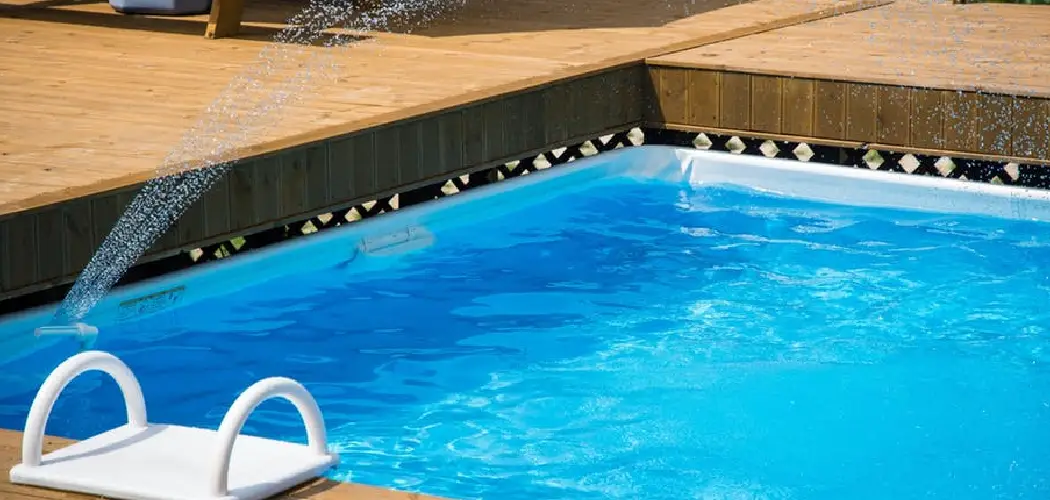There’s nothing more inviting than a crystal-clear, blue swimming pool—but when green water takes over, it can quickly ruin the appeal. Green pool water is more than just an eyesore; it can also indicate issues with water chemistry, circulation, or algae growth. Addressing the problem early will save you time, money, and effort while restoring your pool to its pristine condition.
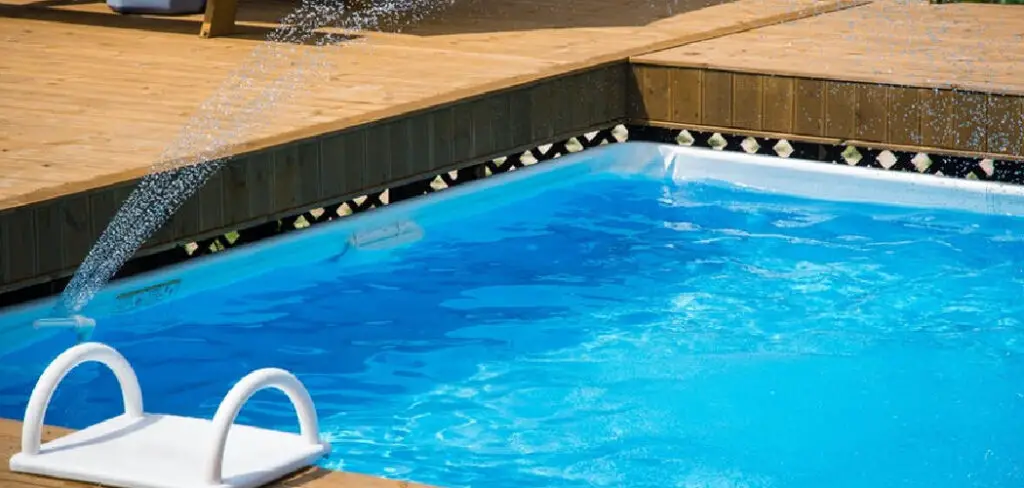
This guide will walk you through how to turn pool water blue from green. You’ll learn the common causes behind green water, essential steps for cleaning and rebalancing water chemistry, and preventative measures to keep your pool sparkling all year long.
Understanding Why Pool Water Turns Green
Causes of Green Pool Water
Green pool water often stems from algae growth, which occurs due to insufficient chlorine levels or poor circulation. Without proper sanitization, algae spores thrive, especially in warm and sunny conditions. Additionally, heavy rainstorms can introduce contaminants like dirt, debris, and phosphates that promote algae blooms.
Environmental factors also play a role. Leaves, insects, and organic matter may accumulate in the pool, further contributing to murkiness. High phosphate levels, in particular, provide nutrients for algae, making it harder to restore clear water if left unchecked.
Immediate Effects of Green Pool Water
When a pool turns green, the impact extends beyond aesthetics. While murky water may be unattractive, it can also harbor harmful bacteria, posing health risks to swimmers. For instance, prolonged exposure to untreated pool water may cause skin irritations, ear infections, or gastrointestinal issues. Additionally, algae buildup can damage pool equipment, clogging filters and putting extra strain on the system.
Essential Tools and Supplies Needed
Chemical Supplies
To restore your pool to a sparkling blue, you’ll need specific chemical treatments:
- Chlorine: Available in liquid, granular, or tablet form, chlorine helps sanitize the pool and kill harmful microorganisms.
- Algaecide: This targeted solution eliminates persistent algae growth and prevents regrowth.
- pH Balancers: Use pH increasers or reducers to adjust the water’s pH level for better chlorine effectiveness.
- Test Kits or Strips: These tools help measure chlorine levels, pH, alkalinity, and cyanuric acid.
Cleaning Tools
- Pool Vacuum or Robotic Cleaner: Removes settled debris and algae from the pool floor.
- Brush with Telescopic Pole: Essential for scrubbing walls, floors, and corners where algae accumulate.
- Pool Skimmer: Handy for skimming floating debris off the surface.
Optional Equipment
- Phosphate Removers: Reduce nutrient levels that feed algae.
- Flocculants: Help clump fine particles, making it easier to vacuum them out of the water.
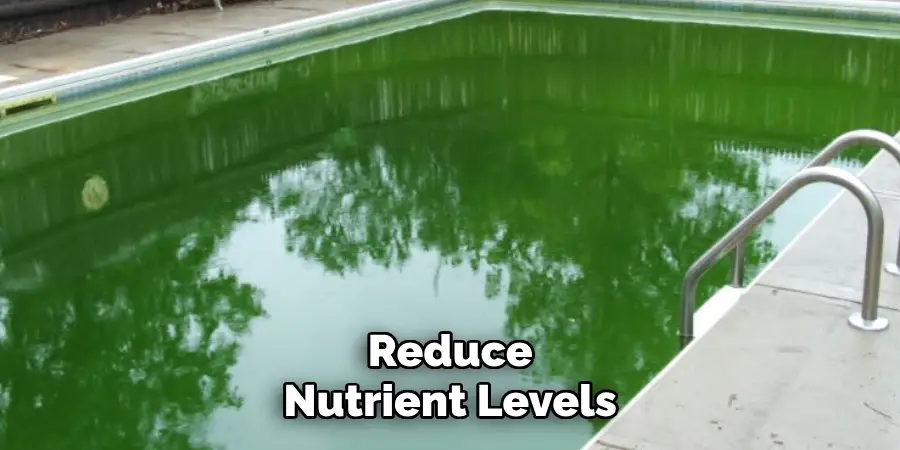
Test and Balance Pool Water Chemistry
Using a Test Kit or Strips
Start by testing the pool’s water chemistry using a reliable test kit or strips:
- Chlorine: Aim for a level between 1 and 3 ppm (parts per million).
- pH: The ideal pH range is 7.2 to 7.6 for maximum chlorine efficiency.
- Alkalinity: Maintain alkalinity between 80 and 120 ppm.
- Cyanuric Acid: This stabilizer should stay between 30 and 50 ppm to shield chlorine from sunlight degradation.
Adjusting Water Chemistry
Once you’ve identified imbalances, take steps to correct them:
- Lower high pH with a pH decreaser, such as muriatic acid or sodium bisulfate.
- Raise low pH with a pH increaser like soda ash.
- Add alkaline or chlorine-based solutions gradually, allowing time for the chemicals to mix before retesting.
How to Turn Pool Water Blue from Green: Shock the Pool Water
What Is Pool Shocking?
Shocking refers to adding a large dose of chlorine to the pool to kill algae, bacteria, and other contaminants. It dramatically boosts chlorine levels, eliminating harmful microorganisms and breaking down organic matter.
Different types of shock include:
- Calcium Hypochlorite (Cal-Hypo): Ideal for regular use, dissolves quickly, and is highly effective against algae.
- Lithium Hypochlorite: A non-clouding option that’s safer for vinyl pools.
- Non-Chlorine Shock: Useful for maintenance but less effective against serious algae blooms.
Step-by-Step Shocking Process
Preparation
- Wear protective gloves and glasses to handle chemicals safely.
- Calculate the required amount by referring to the manufacturer’s guidance. Higher doses might be necessary for severe green water.
- Dilute granular shock in a large bucket of water if instructed, stirring gently to dissolve.
Application
- Spread the shock evenly across the pool surface. For pools with heavy algae blooms, pour more directly into the greenest areas.
- Run the pool pump continuously for 24 hours to circulate the chemicals thoroughly.
Post-Shock Monitoring
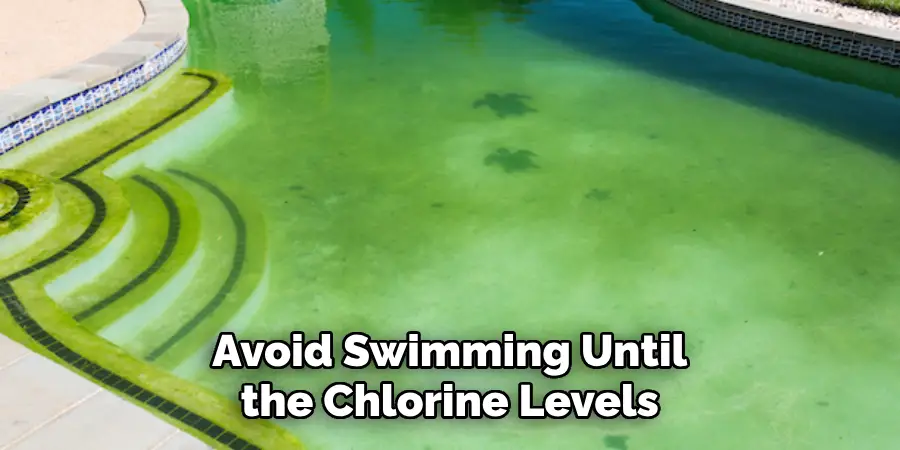
Avoid swimming until the chlorine levels return to safe ranges (1-3 ppm). Test the water after 24 hours to check progress, and repeat the shocking process if necessary. A noticeable improvement in clarity should be evident within two days.
Clean and Remove Debris
Manually Removing Debris
Before tackling algae, use a pool skimmer to collect leaves, bugs, and other floating debris. Then vacuum the pool floor to remove dirt and algae buildup that settled during the process.
Brushing Pool Surfaces
Use a stiff pool brush attached to a telescopic pole to scrub walls, steps, and corners. Pay special attention to shaded areas and places with minimal circulation, as these are breeding grounds for algae. Thorough sweeping ensures no residue remains to trigger new blooms.
Eliminate Remaining Algae
Applying Algaecide
Once the pool looks clean, apply a high-quality algaecide to tackle lingering algae spores. The right algaecide depends on the type of algae:
- Green Algae: Most common and easiest to eliminate with standard algaecides.
- Mustard Algae: Requires a stronger, copper-based treatment.
- Black Algae: Often resistant, requiring specialized brushes and concentrated algaecides.
Proper Application Techniques
- Add algaecide during the evening when sunlight won’t interfere with its effectiveness.
- Allow the pump to run overnight to distribute the solution evenly across the pool. Monitor the water’s appearance the next morning.
Filter and Circulate the Water
Running the Pool Filter Continuously
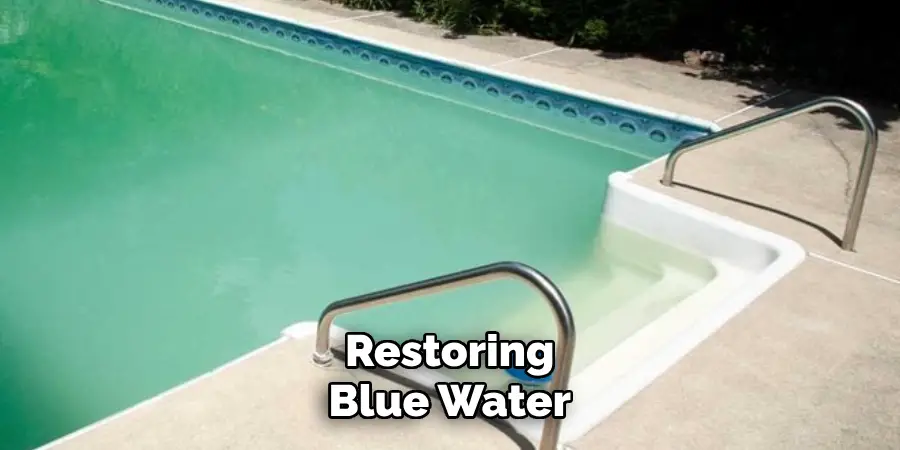
Your filtration system is essential for restoring blue water. Run the filter for at least 24-48 hours after treatments to remove debris particles and residual algae.
Backwashing the Filter
For sand and DE filters, perform a backwash to clear dirt and contaminants clogging the system. If using a cartridge filter, clean or replace the cartridge as needed.
Ensure the pump and skimmer baskets are cleared frequently during this period to maximize efficiency.
Preventative Measures to Keep Pool Water Clear
Routine Pool Maintenance
Consistency is key. Test water chemistry weekly, adjust levels as needed, and clean the pool regularly. Implementing these habits reduces the risk of recurring algae issues.
Chemical Optimization
Use phosphate removers and clarifiers to prevent algae growth. Properly store chemicals in a dry, cool location to maintain their effectiveness.
Seasonal Tips
During heavy-use seasons, increase cleanings and chemical tests. During off-seasons, cover the pool to prevent debris buildup and rainwater contamination.
Common Mistakes to Avoid
Skipping Chemical Testing
Adding chlorine or algaecide without testing can lead to ineffective treatments. Always verify the water’s balance first.
Overusing Chemicals
Excessive shock or algaecide can damage surfaces, irritate swimmers, and waste money. Follow product instructions closely for accurate dosing.
Neglecting Poor Circulation
Failing to run the pump for adequate hours can result in uneven chemical distribution and persistent algae. Address filtration issues promptly to maintain clear water.
Benefits of Turning Pool Water Blue Promptly
Aesthetic and Enjoyment Factors
Fully restoring your pool’s sparkling blue appearance creates an inviting space for relaxation and gatherings.
Reducing Long-Term Costs
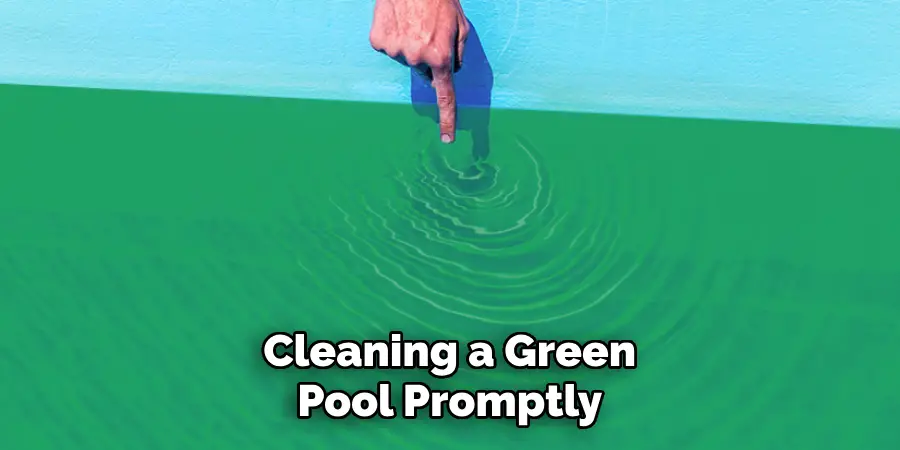
Tackling algae and cleaning a green pool promptly avoids equipment strain, reduces chemical use, and prevents extensive repairs, saving money over time.
Maintaining Chemical Balance
Polluted water can throw off the delicate chemical balance of a pool, making it difficult to maintain safe levels of chlorine and other necessary chemicals. By turning pool water blue promptly, you can prevent this imbalance and keep your pool safer for swimming.
Frequently Asked Questions
How Quickly Should I Act If My Pool Turns Green?
It’s important to take action as soon as possible. The longer algae persist, the harder it becomes to restore proper water balance and clarity.
What Are The Main Causes Of Green Pool Water?
Green pool water is typically caused by algae growth, poor filtration, or imbalanced water chemistry, such as insufficient chlorine levels.
Can I Prevent My Pool From Turning Green?
Yes, maintaining proper water chemistry, routinely cleaning the pool, and ensuring the filtration system functions effectively are key to preventing algae growth.
How Do I Know If My Filter Is Working Properly?
If the pool water remains cloudy or green despite using the correct chemicals, it may indicate a filtration problem. Regularly inspect and clean the pool filter to ensure optimal performance.
Are There Any DIY Methods For Clearing Green Pool Water?
While you can address green water using shock treatments, algaecides, and brushing surfaces, consulting a professional ensures a thorough and effective resolution for severe cases.
Conclusion
Learning how to turn pool water blue from green involves understanding the root causes, addressing water chemistry, and performing thorough cleaning. With consistent maintenance, including regular testing, shocking, and proper use of algaecide, you can enjoy a crystal-clear pool year-round.
Take proactive steps today to preserve your investment and maintain a safe, beautiful pool that everyone can enjoy.
About
Outdoor Fixes is a distinguished figure in the world of Diy design, with a decade of expertise creating innovative and sustainable Diy solutions.
His professional focus lies in merging traditional craftsmanship with modern manufacturing techniques,
fostering designs that are both practical and environmentally conscious. As the author of diy,
outdoorfixes delves into the art and science of outdoorfixes-making, inspiring artisans and industry professionals alike.
Education RMIT University
(Melbourne, Australia) Associate Degree in Design (Outdoor Fixes) Focus on sustainable design, industry-driven projects,
and practical craftsmanship. Gained hands-on experience with traditional and digital manufacturing tools, such as CAD and CNC software.
Nottingham Trent University
(United Kingdom) Bachelor’s in outdoorfixes.com and Product Design (Honors) Specialized in product design with a focus on blending creativity with production
techniques. Participated in industry projects, working with companies like John Lewis and Vitsoe to gain real-world insights.
Publications and Impact
In diy, Outdoor Fixes his insights on indoor design processes, materials, and strategies for efficient production.
His writing bridges the gap between artisan knowledge and modern industry needs, making it a must-read for both budding designers and seasoned professionals.

